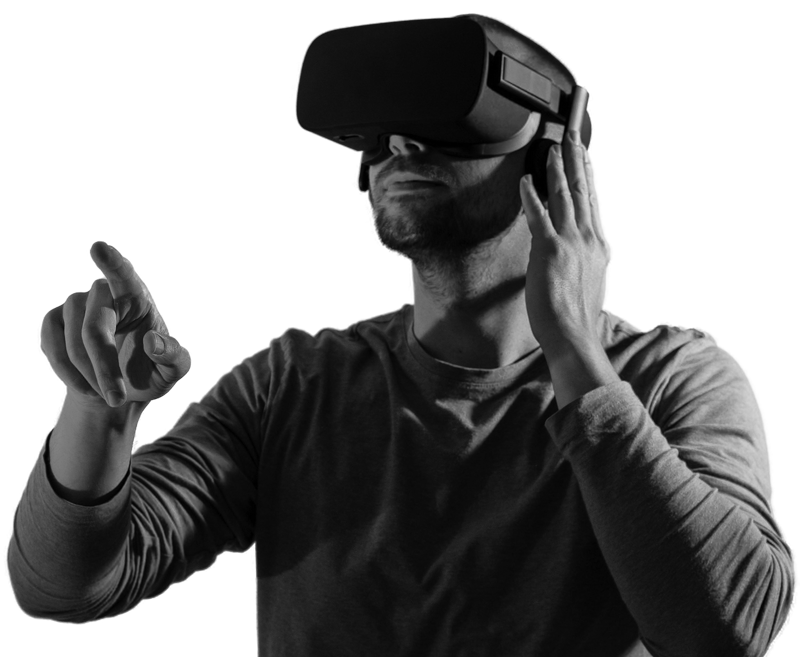We still remember ALL the times our folks bursted into our poster-dressed, neon-star-decorated rooms when we were still young enough for them to have an excuse, telling us in a rather serious tone to “STOP PLAYING THIS RUBBISH, YOU ARE WASTING YOUR TIME”. And yes, they might were right sometimes, at least from their perspective, but little did they know that we were not just looking at a screen; we were learning languages, sharpening our minds and thoughts, setting the foundations for our very imagination. The even more extraordinary aspect of the rubbish, is that these times were not long before it was completely homogenized with and applied on education.
The First Strike
Virtual Reality made its first audacious appearances during the 80’s, usually letting down the over excited public. Mainly in video gaming, but in other aspects of entertainment as well, it never really managed to be sincere. Until the last few years. An explosion in technology and Computer Systems, led Virtual Reality to the digital throne it deserves. Tons and tons of content appearing, pushing the boundaries with each passing day. Again, it was (and still is to be fair) a matter of entertainment and presenting brave new worlds, to adventure-thirsty eyes. Until the need for the extra step appeared.
The Second Strike
Among all the other god-forsaken changes we have to endure through during the covid-era, education was hit hard. For endless months, students had to practice distant education, with limited tools and resources, from an educational system that seems to need innovation more than ever. Worry not, as the call has been answered. Creative Teaching : Virtual Reality was conceived as an answer to a rather difficult question. How will education become innovative, and at the same time discard past practices that seem to be not working anymore?
The Show Stopper
CT : VR makes quite an entrance, bringing along a mix of creativity, inclusion, and innovation in the educational process. Such were the values agreed upon, during the Kick – Off Meeting that took place at Spain, on March, 2022. Partners had the chance to set the basis of the project, analyze its aims and objectives, and develop a fully – fledged workplan regarding the project results. However, no matter all the interesting subjects discussed and planned, there was a Show Stopper, and it was no other than Virtual Reality itself, put in educational action. Centro San Viator and its representatives, carried out a demonstration on Virtual Reality, using the equipment that belongs to the Institution. Of course, everybody was in awe, witnessing the beginning of an educational model that know no boundaries.
The Project’s Results
- Research of VR tools and methodologies in adult education
An in-depth research of comprehensive materials, tools and best practices from the field of virtual and/or augmented reality in education. The research will lead to an overall report, based on National reports issued by the project partners, in order to present VR/AR tools and innovative methods that can be applied in adult education.
- CT : VR Curricula
The CT:VR Curricula will be digitally published, and it will consist of a list of procedures and methodologies regarding VR implementation on 3 levels: organizational, teacher/mentor, participant. It will act as a guideline on possibilities of different implementations and as a tutorial for future use by organizations or teachers. Creative distant learning education methods will be put into action, such as storytelling, script writing and artistic approaches, thus improving teachers and educators’ digital skills. Teachers will also acquire skills on creating new teaching modules.
- CT : VR Guidelines with video tutorials
Project partners will collect and evaluate good practice examples of VR/AR implementation on all levels of educational organizations, with a focus on adult education. A research will be conducted on good practices, gathering knowledge and information from organizations and websites that are already using VR as part of their educational Curricula. The results of the research will be published on the CT:VR platform. The Guidelines will serve as learning material at first, encouraging the involvement of educational organizations, by offering an overview of VR/AR advantages. The CT : VR platform, which will include guidelines with videos, links, pictures, and other interactive material, will be offered as open-source to interested stakeholders.
The Partnership
Behind the scenes of such beautiful creations, digital or otherwise, there is always mastermind with a vision. In our case, more. Many more. The come from 5 different organizations across Europe:
- Centro San Viator – Spain
- Public University of Ptuj – Slovenia
- p-consulting.gr – Greece
- University for Adult Education of Murska Sobota – Slovenia
- Greta du Velay – France
The Target Groups
Primary Target Groups
- Adult educators
- Associations for adult education
- Professionals/experts in adult education
- Mentors
- Lifelong learning teachers
Secondary Target Groups
- Adult learners
- Participants in lifeong learning activities
- Stakeholders (adult education organizations, representatives of social partners, representatives of professionals of the educational chain, cultural institutions, etc.)
An exciting journey begins, certain to get us through amazing destinations.
Stay present, to not miss the future!










